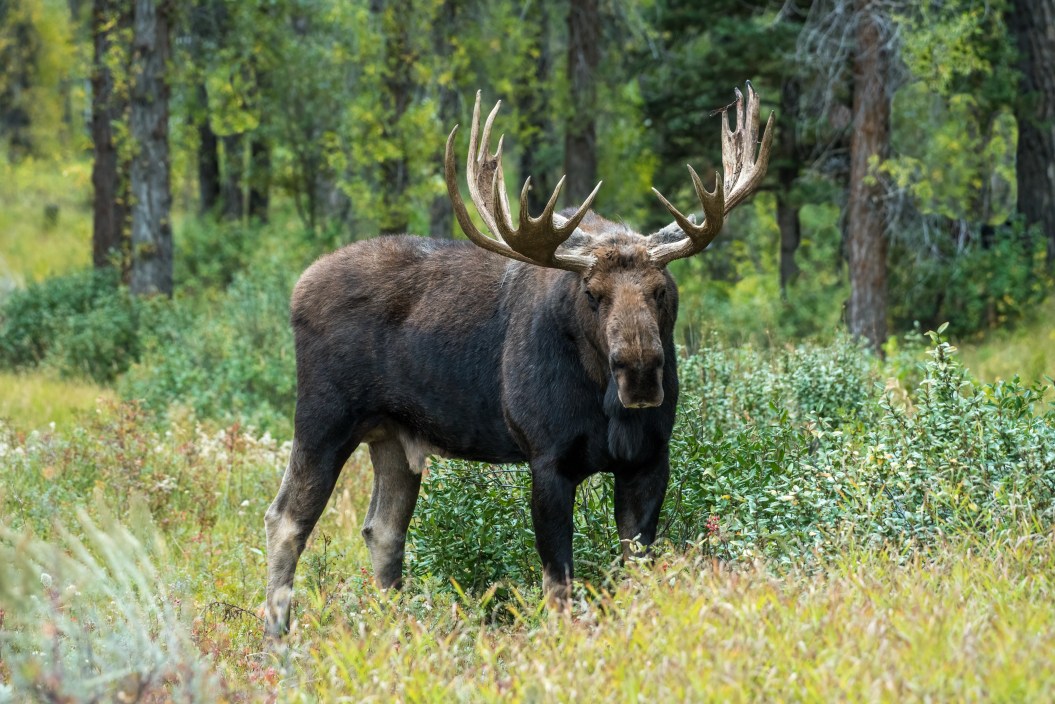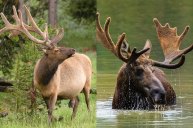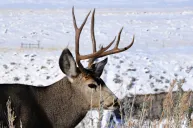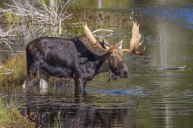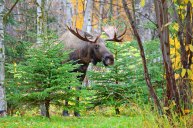With big bulls standing nearly 7 feet tall and weighing up to 1,600 pounds, moose are massive animals. They're technically the largest species in the deer family, prized as trophies for their impressive antlers, second only to how delicious their wild game meat is. An even bigger bragging right for a moose hunter: bagging a record-breaking moose.
While we have no way of knowing that is truly the biggest moose ever, we can turn to the Safari Club International record books to see what is the biggest moose that's ever been downed in North America. But first, a few fun facts on how big moose truly are.
How Big Can a Moose Get?
The size of a moose depends both on its sex and what subspecies it is. Male bull moose are almost always larger than cow moose, but even a small female can weigh over 800 pounds.
The Shiras moose, located in the Rocky Mountains and Pacific Northwest, are the smallest of the moose subspecies, with adult males weighing up to 1,000 pounds. Still, this makes them the largest big game animal in the Rocky Mountains.
Conversely, the Alaska-Yukon moose (also known as the Alaska moose), found in the northwest reaches of North America, is the largest of the subspecies. Male Alaska bulls can weigh up to 1,600 pounds and stand 7 to 8 feet tall at the shoulders. With a massive rack of antlers added on top, these moose can tower over 10 feet tall.
Western Canada moose, also known as Western moose, and Eastern Canada moose, also known as Eastern moose, fall in between Shiras and Alaska moose in size, with Western moose typically being larger than Eastern.
Does Alaska Have the Biggest Moose?
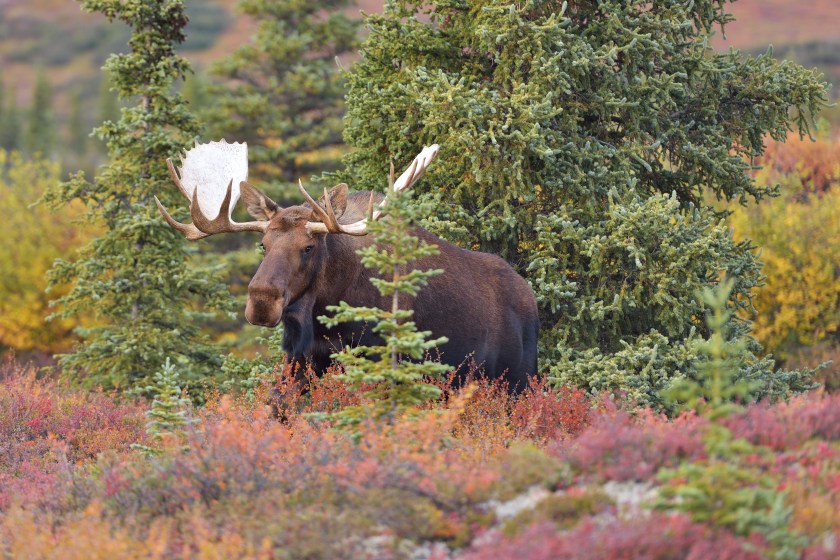
Getty Images, kongxinzhu
As you might have guessed, yes, Alaska has the biggest moose—not only in North America, but in the world. That's why the Alaska moose hunt is on the bucket list of many hunters. Alaska moose inhabit boreal forests and mixed deciduous forests throughout Alaska and western Yukon.
Is There Any Bigger Game Than a Moose in the United States?
The only animal larger than a moose in the United States is a bison. Bison can weigh 2,200 to 3,000 pounds, in comparison to a moose's weight of 800 to 1,600 pounds. However, bison only have moose beat in terms of weight. They "only" stand about 6 feet at the shoulder, and are 8 feet long, making them shorter than moose all around.
Bison can be hunted in Utah, Wyoming, Arizona, Alaska, and Montana, but getting a tag and permit for a hunt is almost impossible. If you're looking for the biggest game animal to hunt, moose is a more likely bet.
What Makes an SCI Record Moose Kill?
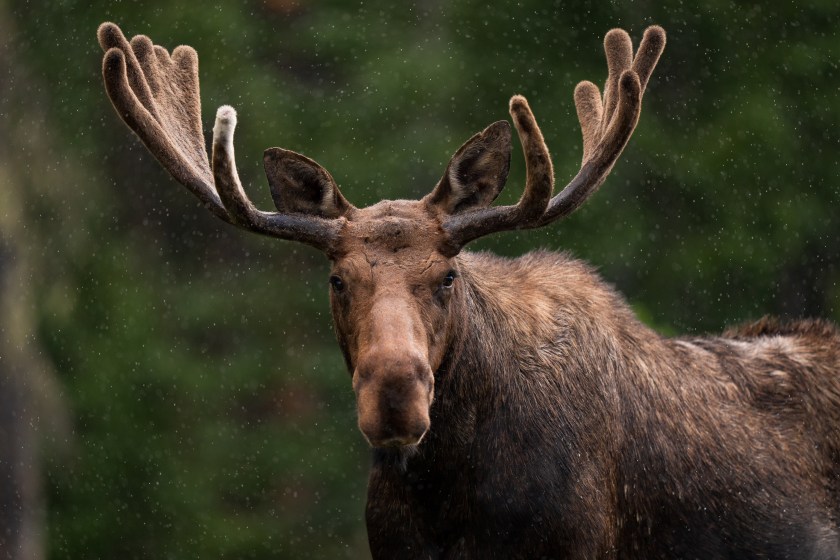
Getty Images, Matt Dirksen
Safari Club International (SCI) recognizes records for four North American subspecies of moose: the Shiras moose, the Eastern Canada moose, the Western Canada moose, and the Alaska-Yukon moose.
To track records of the biggest moose kills, SCI ranks moose by their antler scores, rather than their weight. Using the SCI measuring system to score a moose, hunters must measure the length and widths of each "palm" on the antler (i.e., the big, flat area of a moose antler). SCI also scores the number and length of tines, the circumference of each main beam of the antler at the smallest place, and the greatest outside spread of the moose's antlers.
All of the measurements are added together for the final score of the moose. The bigger the palm spread, and the more numerous and longer the tines, the better the animal scores.
Unlike the Boone and Crockett Club, which also tracks moose records, SCI doesn't deduct the score for abnormal points of differences in antler symmetry. As a result, the SCI score is often significantly higher than the B&C score for the same animal.
Safari Club International Moose Records
1. SCI Shiras Moose Record
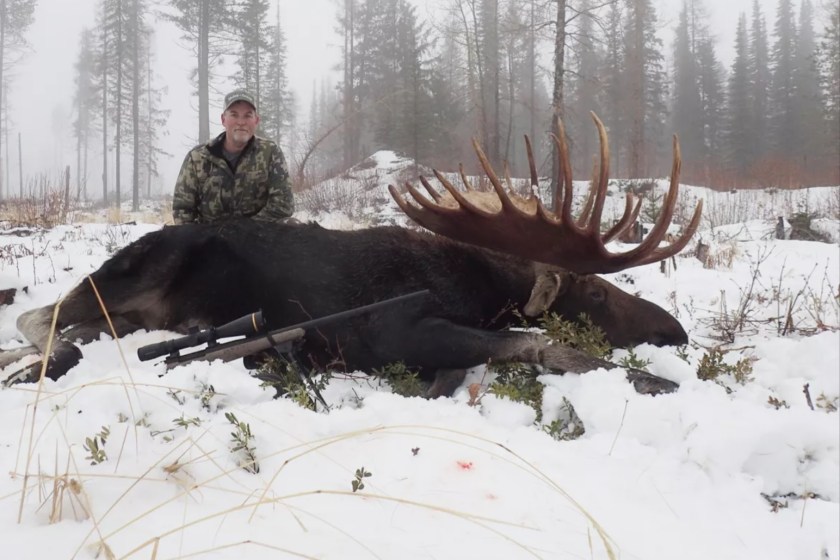
The Spokesman-Review, Jason Parlari
Though they are the smallest subspecies of moose in North America, Shiras Moose can still weigh up to 1,000 pounds. Shiras Moose live in Colorado, Utah, Wyoming, Montana, Idaho, Oregon, Washington, Alberta, and British Columbia.
Jim Hall set the SCI record for Shiras moose in 2018 when he shot a massive bull near Republic, Washington. Hall had been applying for a moose tag for almost 30 years. He was in the last few days of moose season, after two months of unsuccessful hunting, when he took down the impressive animal.
The moose was estimated to weigh about 650 to 700 pounds and had a combined 242 inches on its antler measurements for a score of 504-7/8 inches. Hall beat the previous record by just 1-1/8 inch.
2. SCI Eastern Canada Moose Record
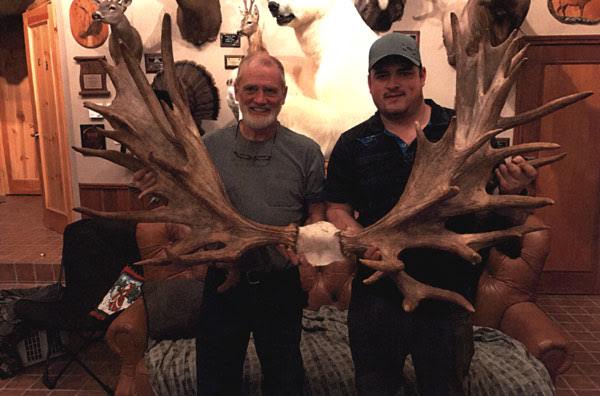
Image courtesy of SCI
Eastern Canada moose live in Ontario, Quebec, New Brunswick, Newfoundland, Nova Scotia, Maine, Vermont, New Hampshire, Massachusetts, Connecticut, and New York. Big bulls can weigh nearly 1,400 pounds.
Jeremy Boileau shot the current SCI record Eastern Canada moose with a rifle in Quebec, Canada in September of 2011.
Boileau's behemoth moose scored an incredible 666-3/8 inches, which is more than 80 inches larger than the next biggest Eastern Canada moose and more than 175 inches bigger than the third-biggest moose in the record book! Not only did the moose have a massive outside spread of 56 inches, but it had a ridiculous 20 points on each antler, which is one of the reasons why it scored so high.
3. SCI Western Canada Moose Record
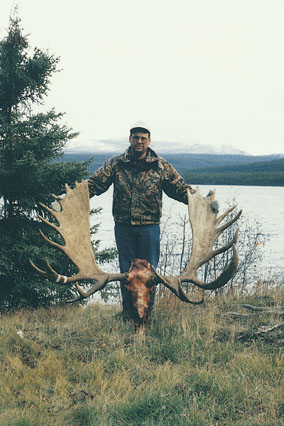
Image courtesy of SCI
Western Canada moose live in British Columbia, Ontario, Yukon Territory, Northwest Territories, Nunavut, Alberta, Saskatchewan, Manitoba, Wisconsin, Minnesota, parts of North Dakota and Michigan's Upper Peninsula. With big bulls weighing nearly 1,500 pounds, they are the largest subspecies of moose found in the continental United States.
Doug Rehbein currently holds the SCI record for the Western Canada moose, for a bull he killed with the guidance of hunting guide Mark Boote of Jennings River Outfitters. Rehbein took the moose in October of 1998 in the renowned moose hunting grounds of the Cassiar Mountains of British Columbia.
This giant moose scored a remarkable 557 inches and had a 64-2/8 inch outside spread with 12 points on one antler with 10 on the other. Though the number of points may seem low for the score, this moose had absolutely massive T-2 and T-4 points, which helped boost it to the record books.
4. SCI Alaska-Yukon Moose Record
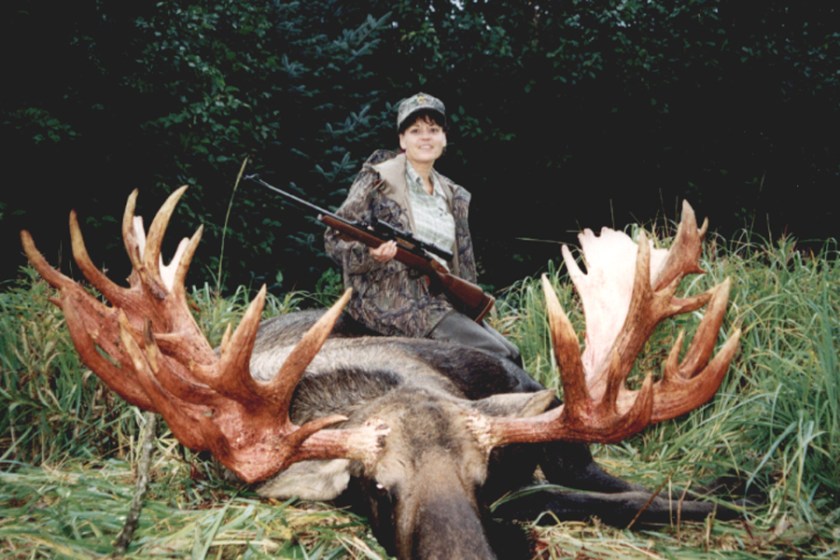
Image courtesy of SCI
Alaska-Yukon moose, as the name implies, live in Alaska and the Yukon Territory of Canada. They're the largest moose in North America, both in terms of body size and antler size.
The largest Alaska-Yukon Moose in the SCI record books, as well as the highest-scoring moose for all of North America, was taken by Debra Card near Cordova, Alaska with a rifle in September 1999. The bull weighed a ridiculous 1,800 pounds.
Not only is this the only moose on the list taken by a female hunter, but it's also the biggest moose on record ever hunted in the U.S. Her moose had a whopping 74-2/8 inches spread with 19 points on one side and 20 on the other. It scored an extraordinary 731-1/8 inches.
To put in perspective how gigantic this moose was, it measured 225 inches larger—that's 68 percent!—than the largest Shiras Moose in the record books.
Other Biggest Moose Harvest: The 1897 Moose
As you now know, SCI lists its record moose by antler size. And while a massive rack is incredibly impressive, what about the largest moose every taken by weight?
That record goes to a monster of a moose taken in September 1897. Weighing 1,808 pounds and standing 7.6 feet at the shoulder, the moose was taken in the Yukon and made it into the Guinness Book of World Records. Over a hundred years have passed and still, no one has touched that record.
But, that doesn't mean there aren't still plenty of monstrous bull moose out there to be taken. Start planning your United States moose hunt today.
READ MORE: Biggest Bear in the World: Official World Records for Each Bear Species
